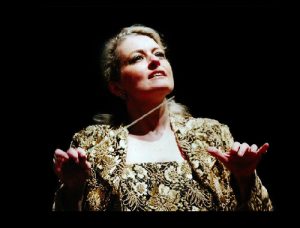Piazzolla Cien Años:Lord of the Tango@100

Conductor Gisèle Ben-Dor
Gisèle Ben-Dor answers key questions about this definitive Piazzolla project:
Raul da Gama: What secrets has the music of Piazzolla revealed to you [that have not yet been revealed to anyone else]?
Gisèle Ben-Dor: It’s quite an original and mind bending question! I must say that my intuitive immediate response may sound more like a confession than a learned reply. I grew with the discipline of so called “classical” music which admitted no “crossovers”. Back in the day, and even through my many first forays into Latin American music, Piazzolla was simply out.
I remember as I was performing Ginastera’s last opera Beatrix Cenci in Geneva, I had the pleasure of making the acquaintance of Aurora Natola-Ginastera, a known cellist and the composer’s second wife. She almost made me promise that I would never perform Piazzolla in the same concert as I performed Ginastera. And in those days, it simply wasn’t done. Time passed, and some great virtuoso instrumentalists [Gidon Kremer, Daniel Barenboim, Yo Yo-Ma] began to play Piazzolla. They broke the taboo, but in my case, I had already become wonderful friends with Ginastera’s daughter, Georgina Ginastera. Her progressive and generous ideas totally supported the combination of Ginastera and Piazzolla as both being great Argentine composers, each in his own world.
And here is the confession: I always felt nuevo tango was great, I had absorbed so much of its language subconsciously growing up in Uruguay, music that my parents loved and therefore I should not touch with a ten- foot pole but secretly loved, tango with its unforgettable melodies- it takes genius to create such melodies-emotional ferocity and sizzling, complex rhythms, but had harbored the fear that perhaps something was wrong with me! The new found acceptance of Piazzolla’s greatness cemented my intuitive conviction that “music- is -music- is -music”, that “cross-over” no longer signifies much, and that its secrets embrace a much broader spectrum than the conservative one I had grown with.
RdG: What was it like performing his most famous work [“Libertango”] and what did it mean to do so with Juanjo Mosalini?
GbD: I think that if you and I were statisticians we might be placing bets on which may be Piazzolla’s most famous work. Some would say “Adios Nonino”, others indeed “Libertango”, but others might place “Oblivion” or “La Muerte del Angel” at the top. In the case of “Libertango”, the essence of this work is its motoric drive and build- up in both dynamics and speed to a rousing, spinning mad dance.
There are many arrangements of this piece, and Juanjo’s is one of the very best. What I most admire in his performance of “Libertango” is the mastery of dynamics Juanjo possesses which allow him indeed to begin with a whisper – in his performances, it is unbelievable the range of dynamics he commands of his bandoneón – and augment the tension imperceptibly through the dynamics as the piece progresses, so that when the speed reaches its maximum level, one really doesn’t know how that happened, how we got there! It is that convincing.
Raul Da Gama
Based in Milton, Ontario, Canada, Raul is a poet, musician and an accomplished critic whose profound analysis is reinforced by his deep understanding of music, technically as well as historically.
